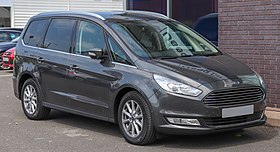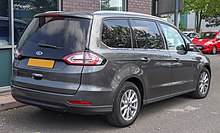
The SEAT Alhambra is a seven-seater minivan that was built from 1996 to 2020. It was manufactured under the SEAT brand from June 1996 onwards at the Volkswagen Group's AutoEuropa plant in Palmela, Portugal. It shares the same platform with the Volkswagen Sharan, and the first generation was also related to the Ford Galaxy. The vehicle is named after the Alhambra of Granada, a famous monument in Spain. It is considered in the motor industry to be a large multi-purpose vehicle (MPV).

The Ford Orion is a small family car that was produced by Ford Europe from 1983 until 1993. A total of 3,534,239 units were sold during the car's ten-year production life.

The Ford Duratorq engine, commonly referred to as Duratorq, is the marketing name of a range of Ford diesel engines first introduced in 2000 for the Ford Mondeo range of cars. The larger capacity 5-cylinder units use the Power Stroke branding when installed in North American-market vehicles.

The Volkswagen Sharan is a seven-seater minivan that was produced by the German Volkswagen Group and built at the AutoEuropa plant in Palmela, Portugal, with a front-wheel-drive version across two generations, from 1995 to 2022. Through badge engineering, the Volkswagen Sharan shares the same platform with the SEAT Alhambra, and the first generation was also in most respects identical to the Ford Galaxy. From 2010 to 2022 the Sharan was in its second generation. It is described in the motor industry as a multi-purpose vehicle (MPV).

The Volkswagen Caddy is a panel van and leisure activity vehicle (M-segment) produced by the German automaker Volkswagen Group since 1980. It is sold in Europe and in other markets around the world. The Volkswagen Caddy was first introduced in North America in 1980 and in Europe in 1982. The first and second generations also had pick-up variants.

The Ford EcoSport is a subcompact crossover SUV (B-segment) manufactured by Ford between 2003 and 2023.

The Ford Sigma is a small straight-4 automobile engine introduced in 1995 by Ford Motor Company. Its first evolution was sold as the Zetec-S, then Zetec-SE and finally, in later years, renamed Duratec. The last upgrade of the engine is named Duratec Ti-VCT. Conceived for Ford's smaller models, the motor was intended to replace the older HCS and smaller capacity CVH units.

The Ford Escort is a small family car that was manufactured by Ford of Europe from 1968 until 2000. In total there were six generations, spread across three basic platforms: the original, rear-wheel-drive Mk.1/Mk.2 (1968–1980), the "Erika" front-wheel-drive Mk.3/Mk.4 (1980–1992), and the final CE-14 Mk.5/Mk.6 (1990–2002) version. Its successor, the Ford Focus, was released in 1998, but the final generation of Escort was phased out gradually, with the panel van version ending production in 2002 in favour of the Ford Transit Connect.

The Ford S-Max is a car produced by Ford Europe for the European market. A multi-purpose vehicle (MPV), Ford also describes the S-Max as an SAV. Introduced at the 2006 Geneva Motor Show, the S-Max went on sale alongside the new generation Galaxy in June 2006.
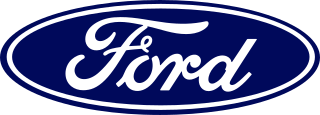
Ford of Europe GmbH is a subsidiary company of Ford Motor Company founded in 1967 in Cork, Ireland, with headquarters in Cologne, Germany.

The Ford Focus (third generation), also known as the Focus Mk III, (Code name: C346) debuted at the 2010 North American International Auto Show as a 2012 model. The cars shown were a 4-door sedan and 5-door hatchback, also debuting a new 2.0-litre direct injection I4 engine. A 5-door estate (wagon) was previewed at the Geneva Motor Show a month later.
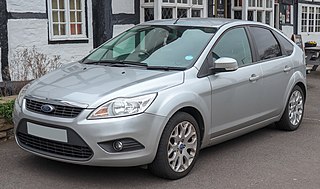
The Ford Focus Mk 2 is the second generation of the Ford Focus, a range of small family cars that were produced by Ford Motor Company from 2005 to 2010. It was launched at the Paris Motor Show on September 25, 2004, as a three and five-door hatchback and an estate, although the new car was previewed, in 4-door saloon form, as the 'Focus Concept' developed by Ford Europe at the Beijing Motor Show in mid-2005.

Ford Motor Company used the Zetec name on a variety of inline 4-cylinder automobile engines. It was coined to replace "Zeta" on a range of 1.6 L to 2.0 L multi-valve engines introduced in 1991 because Ford was threatened with legal action by Lancia who owned the Zeta trademark. The company used the name widely in European advertising and later introduced it to the North American market with the Contour.

The Ford Mondeo I (first generation) is a mid-size car that was produced by Ford, beginning on 23 November 1992, with sales beginning on 22 March 1993. It is also known as the Mk I Mondeo; the 1996 facelift versions are usually designated Mk II. Available as a four-door saloon, a five-door hatchback, and a five-door estate, all models for the European market were produced at Ford's plant in the Belgian city of Genk. In December 1992, Autocar published a section on the Mondeo, and how it would conquer rivals.
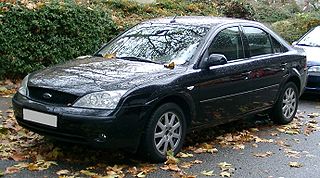
The Ford Mondeo Mk3 (second generation) model was launched by Ford in October 2000. This Mondeo was considerably larger than its predecessor, and although Ford abandoned its New Edge design theme for the second generation, it was their first vehicle to fully benefit from the Prodigy concept car. This gave it an overall effect which many critics felt was more restrained and mature, if much less distinctive. Two of the old car's biggest weaknesses, the modest rear legroom, and uncompetitive diesel version were addressed by a 50 mm (2.0 in) longer wheelbase and the new Duratorq diesel engine. The basic chassis and suspension design was carried over from the previous generation, which meant that the car continued its predecessor's reputation for class leading handling and ride. This Mondeo came to Mexico, replacing the North American built Ford Contour, and was sold from 2001 to 2007, when the Ford Fusion replaced it. The North American market Fusion and Ford Five Hundred/Taurus sported very similar styling, inside and out.

The Ford Mondeo Mk IV (third generation), codenamed CD345 was officially unveiled in five-door production form by Ford in late 2006. Based on the EUCD platform developed with Volvo, the platform was the same as that used in the new large MPVs Galaxy and S-MAX, but not the North American Ford Fusion or the Mazda Atenza in Japan. It was also used for several Volvos starting with the Volvo S80 II.

The fourth generation of the Ford Mondeo, is a range of mid-size cars produced by Ford from 2013 to 2022. Developed under the model code CD391, it is a rebadged variant of the American-market Fusion sold in Europe, Latin America, China and Australia. Revealed at the 2012 North American International Auto Show in Detroit, Michigan, the Mondeo is based on a new iteration of Ford’s C/D platform, which it shares with the Galaxy and S-Max large MPVs. The Fusion had started production in 2012, which was about one year before the Mondeo had. At its launch, it served as the flagship model for Ford’s lineup in China, and was tested on Chinese roads in 2013.

The Fiesta Mark IV was launched in October 1995 and became Britain's best-selling car from 1996 to 1998, when it was overtaken by the all-new Ford Focus, a replacement for the Ford Escort.

The Ford Fiesta Mk5 is the fifth generation of the Ford Fiesta supermini built in Europe between April 2002 and 2008. The Fiesta continued to be built in Mexico until 2010 and in Brazil until 2014. Most engines were carried over from the previous Fiesta. This generation became the best-selling Ford Fiesta generation to date. This was the first Fiesta to be sold in Asia and Australasia, where it replaced the Kia-based Festiva.

The Ford Fiesta Mk6/Mark VI is the sixth generation of the Ford Fiesta supermini. The sixth generation Fiesta was shown in a concept car form as the Ford Verve at the Frankfurt Motor Show in September 2007, with introductions in Europe, the Americas, Asia, Australasia, and Africa. Developed under the project code B299 and B409, the model uses the Ford global B-car platform newly developed for the model.











